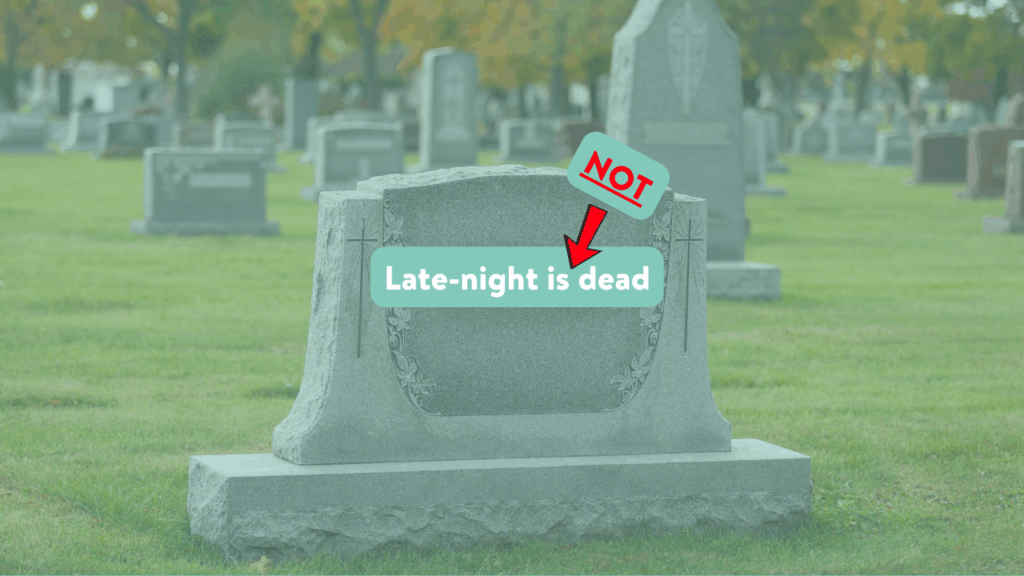10 Sketches that teach sketch comedy

I’ve been teaching sketch comedy for many years, and writing sketches for years before that. This kind of experience gives one an knack for watching sketch differently. How much can be learned from watching some of the very best sketches that the world has to offer? Turns out, quite a bit!
Below, I’ll list the sketches that I’ve found have the MOST to teach us. Not only that, I’ll give you the inside insight into WHAT they can teach. Dive in! Learn a little something! And laugh at some goofs along the way.
To learn structure
This is a classic. Why bother writing sketch comedy if you haven’t seen this sketch. It perfectly maps hilarious jokes around standard sketch structure. If you want to see how to create a clean, funny, well-received sketch–watch this one and do everything you can to emulate it! You’ll see all five points, all three hilarious beats, a goofy break in the game, and SNL’s classic button: jumping out of a window.
To learn heightening
Watching this sketch is, what I assume, a lot like a musician watching a stellar conductor…conduct. Key & Peele are doing their thing in this sketch. It feels relaxed, somehow despite its textbook use of heightening. I typically ask each of my students to name just ONE way in which this sketch heightens the joke, and by the end of our discussion, we’re left with a LIST: the length of the word, the hiding spots, the caution, the specificity of their descriptions. Incredible work from two pros.
To learn pace and efficiency
This sketch is blink-and-you’ll-miss-it fast. The effortless application of sketch structure (especially exposition and introducing the joke!) and heightening make it the perfect watch. Once you have the basics down, watching and learning from this nasty little sketch will level-you up into a sketch fiend.
To learn character
This pair of peas-in-a-pod character sketches are two of my very favorites from Black Lady Sketch Show‘s too-short run. These characters (who, as peas-in-a-pod are essentially one character split into two bodies) perfectly illustrate how essential character sketches are to a comedy writer’s arsenal. The joke is extremely clear and transferable from one sketch to another. Tag on the pitch-perfect choices in environment, designed to specifically highlight the joke through contrast, and you can learn pretty much all there is to know about character sketches from these two vids.
To learn commercial parody
Yes, SNL is known for its amazing commercial parodies. They’re a dime a dozen at this point: Totino’s, Wells for Sensitive Boys, and Mom Jeans to name (just) a few. But, SNL has specific needs in commercial parodies that many of us don’t have to prescribe to: length, repeatability, host approval, etc. This sketch, by GOLD digital team No Worries If Not, illustrates perfectly what a commercial parody should do. It is funny, rebellious, and feels just like the medium it’s parodying. If you can master a commercial parody, your sketch portfolio will be much stronger for it.
To learn trailer parody
As a subsection of commercial parodies, trailer parodies get a lot of play. This SNL sketch illustrates how important it is to NAIL your genre, provide only the most important details, and find a specific and original angle. While this sketch is too new to call a classic, it stands up under even intense scrutiny.
To learn drop-in (genre) parody
While this sketch does NOT hold up against intense scrutiny, it does a whole lot right, and there’s a lot to learn from it. The writers went to specific lengths to ensure the audience has all the expositional/background information they need (from Scandal) to understand and enjoy the jokes (see: “That was the president of the United States.”). It also illustrates how important it is to keep EVERYTHING about what you are parodying the same except YOUR joke–both for clarity and to punch the joke. Plus, Lena Dunham’s performance as the regular girl genuinely still tickles me all these years (and watches) later.
To learn (the emerging!) content parody
Content parodies are not something you will see discussed in the wide world, or at most comedy theaters/schools. But, over my time teaching sketch, a new pattern has emerged, a new type of parody. It’s not a commercial parody (exactly…) and it’s not a genre parody (exactly…). Rather, it’s a parody of online content (certain TikTok trends, viral videos, and in this case–Vogue’s 73 Questions). This sketch, by GOLD digital team We’ll Call You, perfectly illustrates this emerging form. Not only that, it teaches you that through specificity you can find an original angle in your writing. Originality is an impossible goal, but specificity is a necessary one.
To learn cringe
I want to leave you with a slightly more advanced idea. Cringe comedy, formula breaking…what happens when your goal is to elicit laughs, but not JUST laughs? How does changing your perspective on what sketch is/can be, change your writing? The above sketch asks and answers these questions–questions that writers often enter a sketch class with. Sketch is meant to push writers, it’s a fun and experimental art form. If you think you know everything that watching and writing sketch can teach you, I assure you, you’re wrong. Have another watch and take another stab at writing (not just one) sketch. Good luck and have fun!
Want the structure and feedback of a sketch class? What about a community that offers both, and unlimited courses? Join GOLD today or check out what courses are starting soon.




